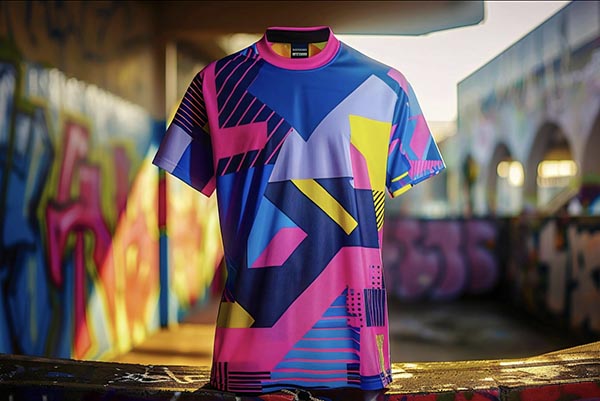
(Image courtesy of Texintel)
The adoption and enablement of intelligent technology to facilitate both sustainability and commercial viability within the textile sector is now a priority for all stakeholders within the supply chain—for the supplier, the manufacturing network, and the retail community. Both represent opportunity but present multiple challenges
Apparel is a complex sector where, in order to reap the environmental and commercial benefits, technology must be implemented at scale. In reality, the digitization of this vast, complicated sector—and the entire textile industry—will take many years. Rewiring the entire apparel supply chain is underway but progress is slow and painfully incremental—and must accelerate if the industry is to make positive environmental change.
How Do We Define Smart Manufacturing
Smart manufacturing by its nature is intelligent, intuitive, and efficient in its use of resources; i.e., design, materials, efficiency, agility, performance, availability and presentation, and, crucially, commercial execution.
Implementing this multifaceted range of digital technologies—which include AI, 3D design, and digital materials, and digital patterns with automatic, embedded color management, digital textile printing, and workflow automation all the way through to fulfilment across the value chain—impacts large and small retailers differently.
Currently the retail supply chain is fragmented and focused (on the whole) on volume. Built for scalability, many of the behemoth mega brands within the market are focused on growth, not sustainable supply. The operational agility and disruptive force of smaller brands is becoming increasing prevalent—those whose business models are agile and are not encumbered by legacy retail business models and buying behaviors can flex to meet market demands.
Looking at fashion, a fragmented market where 138% of global profitability comes from just 20 major companies, none of these large companies represent more than 3% of the industry as a whole (McKinsey Fashion Index). Therefore, all stakeholders collectively have the power (large or small) to make a choice and select effective change.
Underpinning enablement and systemic change is the digitization of traditional sourcing routes and the democratization of manufacturing and retail. Only by transforming the manufacturing cycle can we engage the benefits of digital technologies—namely, smart manufacturing and intelligent supply.
Why Smart Means Much More Than On-Demand
As an example, the global fashion industry is currently worth over $1.4 trillion dollars, and the investment required to adopt and digitize the supply chain is significant. That’s a big ask for many businesses currently struggling with rising costs and geo-economic instability.
Large volume manufacturing underpins economies across all continents and will continue to expand in line with global affluence. The reality is that, in the future, we will produce more products not less. According to Statista, the global revenue in the apparel market was forecast to continuously increase between 2024 and 2028 by in total US$0.2 trillion (+11.17%). After the eighth consecutive increasing year, the indicator is estimated to reach US$2 trillion and therefore a new peak in 2028.
The nuance in all textile market growth will be intelligent data combined with digital manufacturing technology, which enables all stakeholders to reengineer buying behaviors and utilize technology with a greater degree of accuracy.
For the retailer, this shift will transform the future of supply and increase profitability by reducing waste and overstocks. In moving away from seasonal buying behaviors, brands can further harness the power of on-demand to retain and grow market share across the globe.
For the manufacturing community who will be impacted by this positive shift to on-demand supply, this represents a generational opportunity to rewire the mechanics of traditional production.
A Sustainable Solution with Environmental Benefits
Close proximity manufacturing goes beyond software and equipment to enable the birth of a strategic, geographical manufacturing network—a smart, intelligent, agile network that harnesses strategic partnerships alongside digital technologies to relocate production closer to the consumer.
A good example of disruptive technology from the fashion arena is DTG (direct to garment) with astonishing success. In removing the need for screens, this technology aligns with shifting consumer behaviors delivering enhanced creativity and personalization on-demand. Kornit Digital technologies continue to evolve to meet market specifications and their demanding expectations. DTG, initially utilized for cotton T-shirts and small customized apparel garments and accessories is now focused on disrupting the Sportswear marketplace with equipment such as the Kornit Atlas Max POLY system which prints directly onto polyester based apparel. Transforming the traditional sportwear manufacturing supply chain, permanently.
Rewiring the Manufacturing Process
As can be seen, the environmental benefits of a digital supply chain are significant. On-demand production for large and small volumes using digital technologies frees all stakeholders from the burden of mass production. It democratizes supply and will transform global production and ultimately global and local economics.
As the sand shifts towards technology for the fashion cohort, strategic partnerships become of increasing importance. Kornit Digital saw this trend earlier than most; their KornitX partner network offers the global community access to their technology and partner fleet and represents a real-time vision of the future of smart manufacturing and global, close proximity fulfilment.
Seamless Supply and Fulfilment Democratizing Fashion
When talking of democratizing fashion, you need look no further than the behemoth Amazon to witness the potential scale that the fashion retail sector represents.
In leveraging their global community, Amazon’s move into manufacturing and their patented on-demand apparel factory, signals the seismic transformation that digital technologies enable.
The facility is said to utilize and integrate digital design, software, robotics, and automated technologies for end-end fulfilment in the years ahead. It addresses the needs of an evolving marketplace to enable seamless fulfilment of fashion and décor on-demand, going further to deliver tailored fashion that is hyper personalized.
The Future of Sewn Textile Retail and Supply
We can expect many disruptive technologies to evolve in the journey ahead, changing the landscape of product design, production and retailing beyond our wildest dreams.
Those who strategically plan ahead and focus on digital implementation will be rewarded commercially for their endeavors in this new frontier. Print Logistic is a shining example of smart manufacturing. The business was founded with the intent to rewire the supply chain and the manufacture of printed, sewn apparel on-demand, utilizing a digital workflow alongside digital printing equipment. At the forefront of manufacturing, Print Logistic’s disruptive business model continues thrive and expand as they venture into new markets, the latest being Interior décor.














